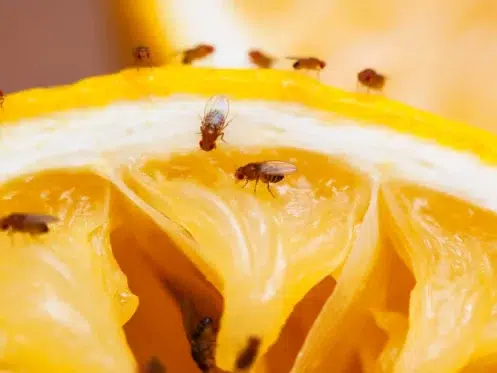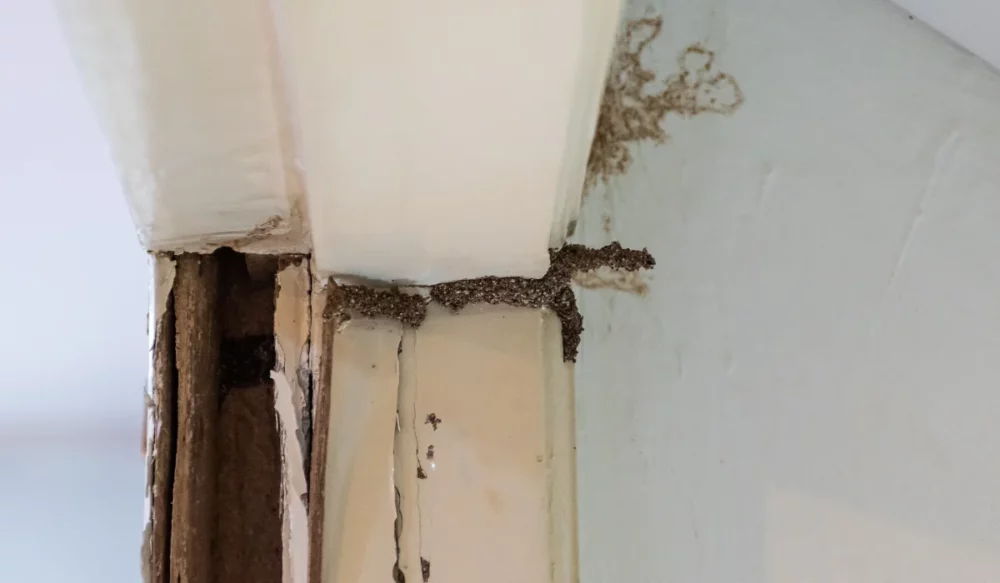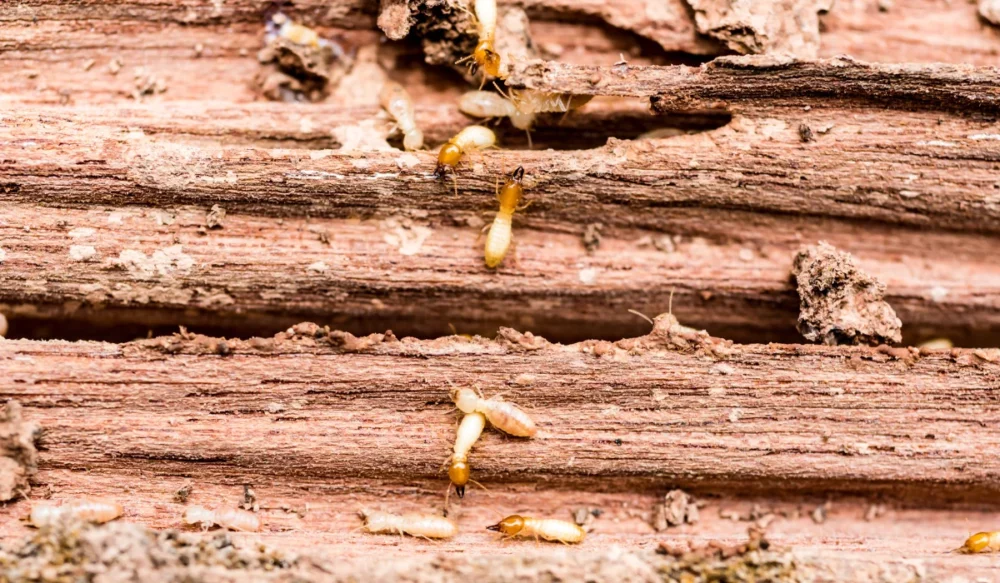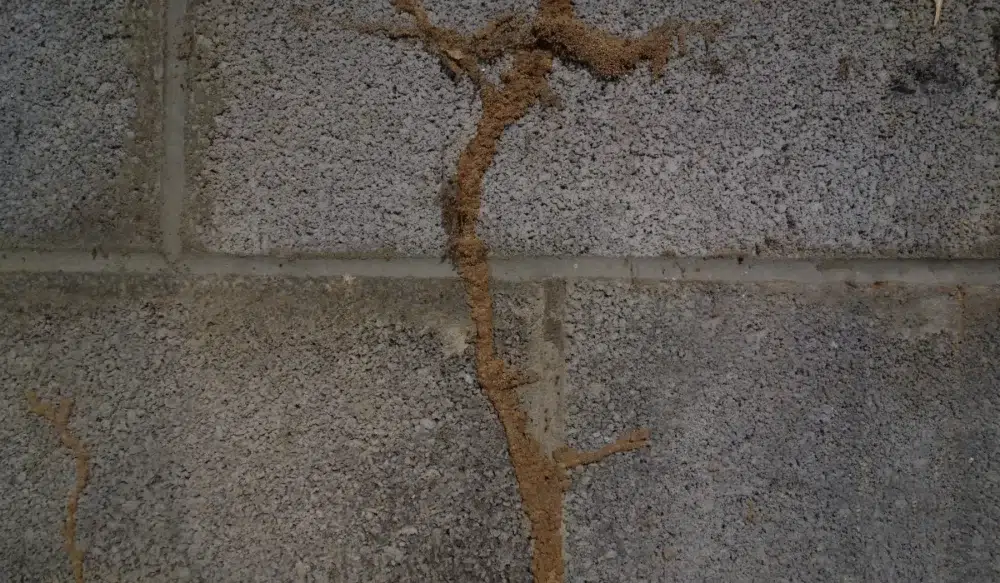Kitchens in Arizona are a prime target for flies year-round, especially during the hot summer months.
Whether you’re in Phoenix, Chandler, or Tucson, it doesn’t take long for a few flies to turn into a full-blown fly infestation if conditions are right. From house flies and fruit flies to drain flies, these pests are drawn to moisture, food scraps, and warm conditions, three things every kitchen has.
In this article, you’ll learn the common fly species found in Arizona homes, why your kitchen attracts them, and what you can do to keep your space clean, safe, and fly-free.
Key Takeaways
- Fruit flies, house flies, and drain flies are the most common fly species in Arizona kitchens.
- Entry points, such as torn screens, open doors, and drains, invite flies into your home.
- Flies are attracted to food sources such as trash cans, drains, and standing water.
- Persistent fly infestations should be handled by local pest control professionals who are familiar with Arizona homes.
Why Flies Love Arizona Kitchens
Arizona Heat Speeds Up the Life Cycle of Flies
Arizona’s year-round warmth provides flies with the ideal environment for breeding. In places like Mesa and Phoenix, house flies can complete their life cycle in under a week when temperatures hover above 85°F. That means one overlooked food scrap or drain issue can lead to dozens of adult flies in just days.
Kitchens Offer the Perfect Mix of Moisture and Organic Matter
Every kitchen has three things that flies love: moisture, organic matter, and flies themselves. Fruit flies are especially attracted to overripe produce and sticky spills. Drain flies thrive on the buildup inside kitchen drains, feeding on decaying food and grease. Even a damp sponge or dirty garbage disposal can fuel a fly problem.
Entry Points Allow Flies Inside
Tiny entry points around windows, doors, and vents are often overlooked. In older homes across Tempe and Chandler, torn screens or gaps in window frames provide easy access for pests. Once inside, flies don’t need much to settle in; a bit of rotting food, standing water or forgotten crumbs is enough.
Types of Flies Found in Arizona Kitchens
Fruit Flies
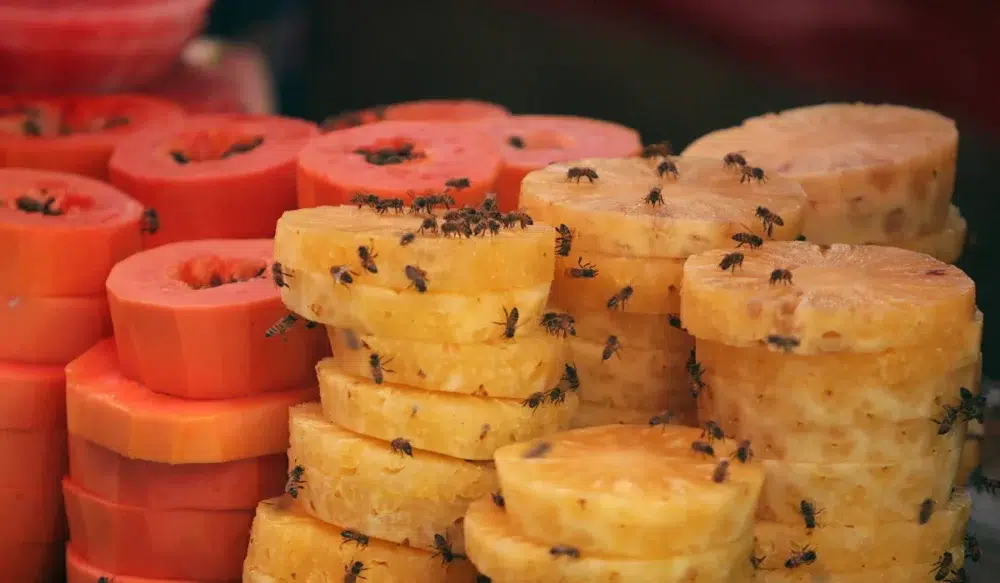
These are the tiny, reddish-brown flies that hover around bananas or wine glasses. They’re especially common in summer when produce ripens quickly and trash cans aren’t emptied often.
Attractants: Overripe fruit, wine bottles, sticky countertops.
Tip: Use apple cider vinegar in a dish with a drop of soap as a simple fruit fly trap.
House Flies
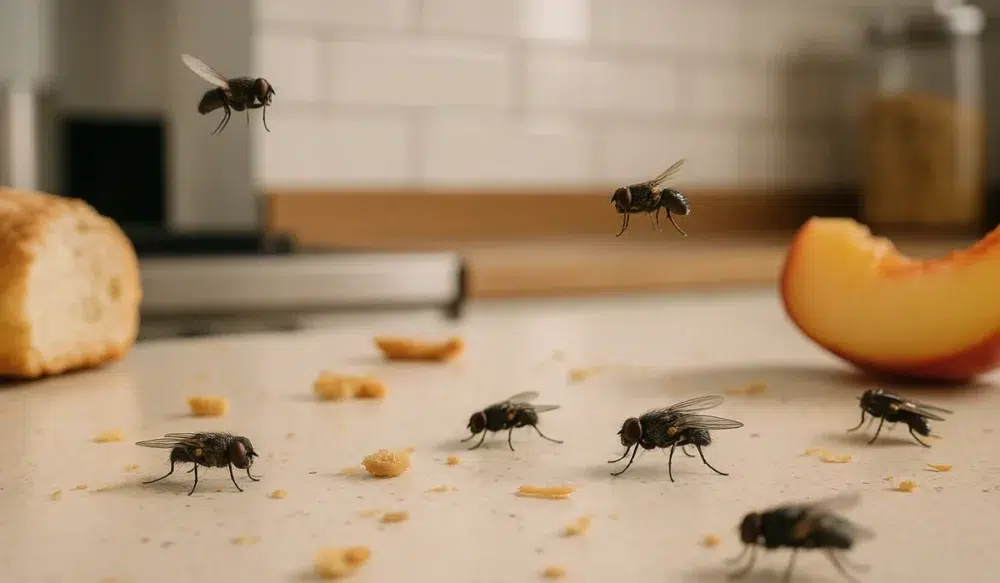
The common house fly is larger and more noticeable. You’ll often see them buzzing near windows or landing on food. These flies can carry pathogens, making them more than just a nuisance; they can also pose a significant health risk.
Attractants: Trash cans, meat scraps, uncovered food.
Tip: Keep trash sealed and take it out regularly, especially in summer.
Drain Flies
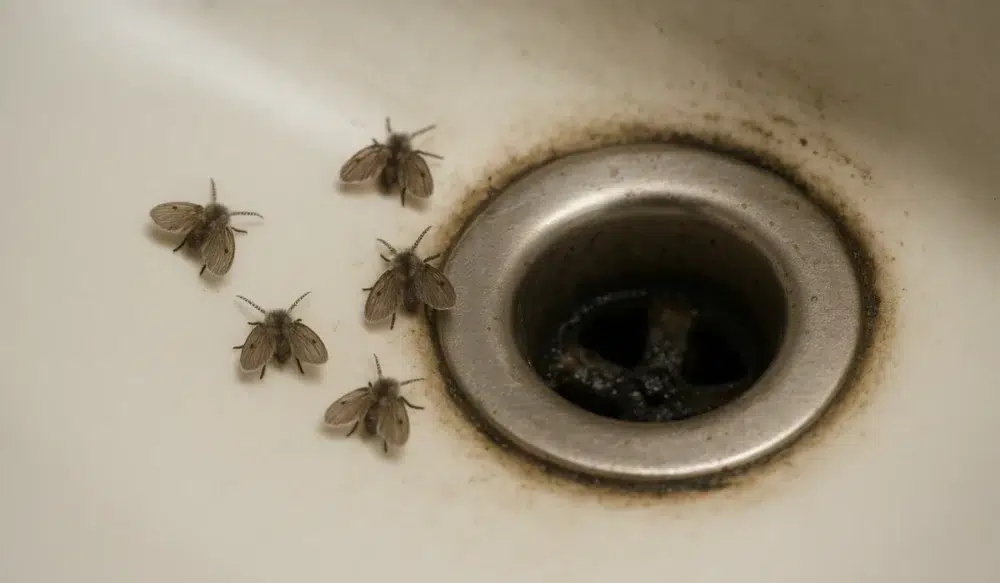
These fuzzy, moth-like flies breed in the gunk inside your sink drains. You might not notice them until they’re hovering around the sink or resting on tiles.
Attractants: Organic matter in drains and standing water.
Tip: Use a drain brush to clean out the slime and flush with hot water.
Signs of a Fly Infestation
Noticing one or two flies might not seem like a big deal, but here are signs your fly problem could be more serious:
- You see adult flies daily, especially in the same area.
- Flies appear to be coming from the sink or garbage disposal.
- You find larvae (maggots) near trash bins or drains.
- You use DIY repellents or fly traps but flies return quickly.
How to Prevent and Eliminate Flies in the Kitchen
1. Eliminate Food Sources
Flies can’t breed without access to food. Make it a habit to:
- Clean up spills immediately.
- Rinse out bottles and cans before placing them in the recycling.
- Store produce in the fridge, not on the counter.
- Wipe down countertops daily, especially around coffee makers and blenders.
2. Tackle Moisture and Organic Matter
If you’re noticing drain flies, the issue is likely a buildup in the pipes. Use a stiff-bristle brush and hot water to scrub the sides of your drains. Don’t forget to:
- Dry out sinks overnight.
- Check for standing water under the sink or near appliances.
- Clean out the dishwasher filter regularly.
3. Seal Off Entry Points
Use weather stripping around doors and windows. Repair torn screens and check vent covers. Even a quarter-inch gap can let flies in.
In desert cities like Scottsdale and Tucson, seasonal fly movement happens when outdoor food sources dry up, so keeping your home sealed is especially important during high heat.
4. Use Fly Traps and Natural Repellents
DIY fly traps made with apple cider vinegar are effective for controlling fruit flies. For larger house flies, placing sticky fly traps near trash bins can be helpful. You can also use repellents like:
- Essential oils: Peppermint and eucalyptus work well around doors and windows.
- Citrus peels: Placing orange or lemon peels near entry points can help deter flies.
- Herbs: Basil and mint pots near kitchen windows offer both scent and a natural barrier.
When to Call a Pest Control Professional
If you’ve cleaned, sealed, and trapped flies but still see them, it’s time to call a local pest control expert. Hidden fly infestations, such as those behind walls or deep within drain systems, often require professional tools and treatments.
At Green Home Pest Control, we employ targeted fly control strategies designed explicitly for Arizona homes. From Phoenix kitchens to Chandler apartments, we know how to find the source and stop the cycle of infestation.
Just give us a call or request a free quote because we don’t just treat the symptoms; we identify entry points, clean out breeding grounds, and help you prevent future issues with fly species and other common pests, such as cockroaches or gnats.
FAQs About Fly Control in Arizona Kitchens
What causes fruit flies in clean kitchens?
Even a single overripe banana or food scrap in the trash can attract fruit flies. Check for hidden attractants, such as recyclables, drain residue, or even wine corks.
Can drain flies make you sick?
Drain flies aren’t known to transmit disease, but they can indicate poor sanitation and may share space with more dangerous pests.
How do I know if I have a fly infestation?
If you see adult flies daily or find maggots or larvae around food or drains, it’s time to act. Recurring flies are a strong sign of breeding happening indoors.
Do I need pest control for a fly problem?
If DIY fly control isn’t working or you’re dealing with recurring infestations, professional pest control services can offer a longer-term, more effective solution.
